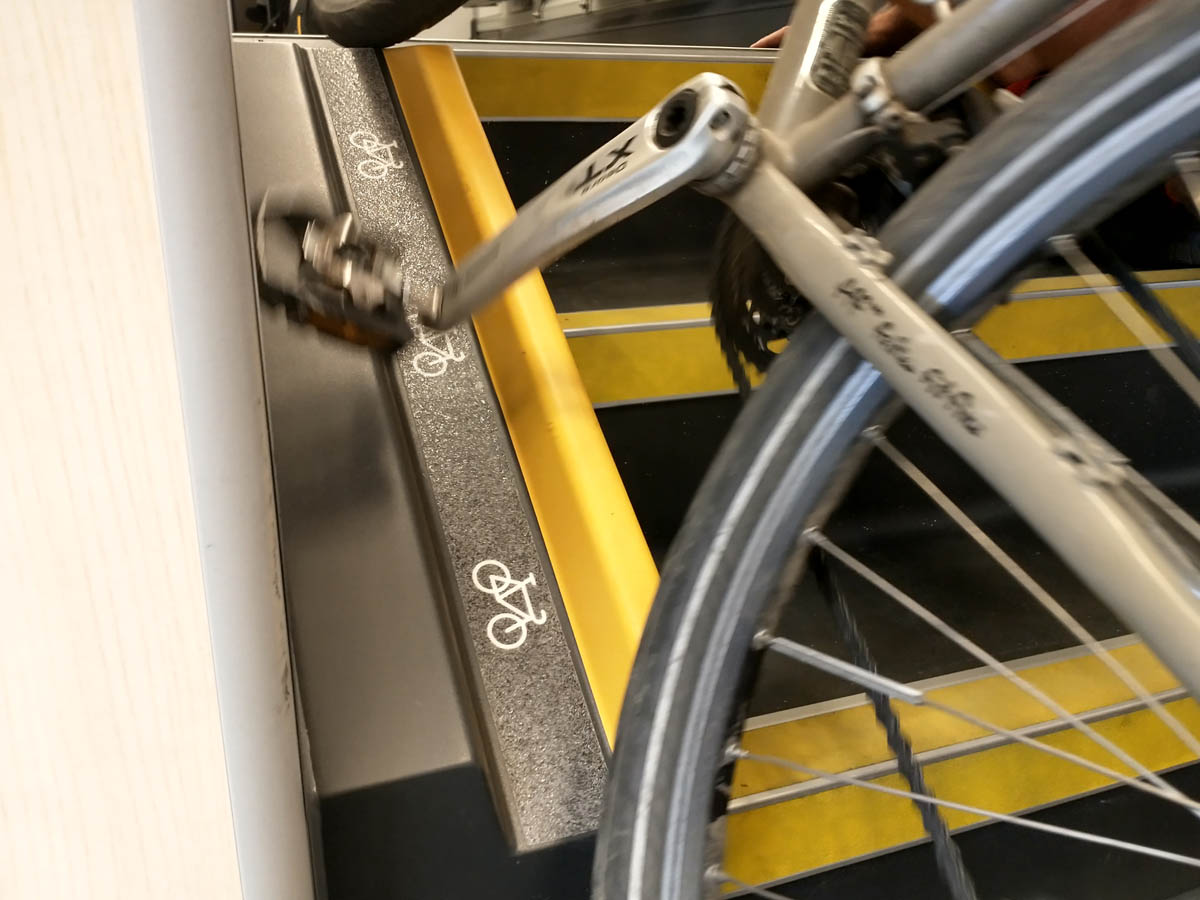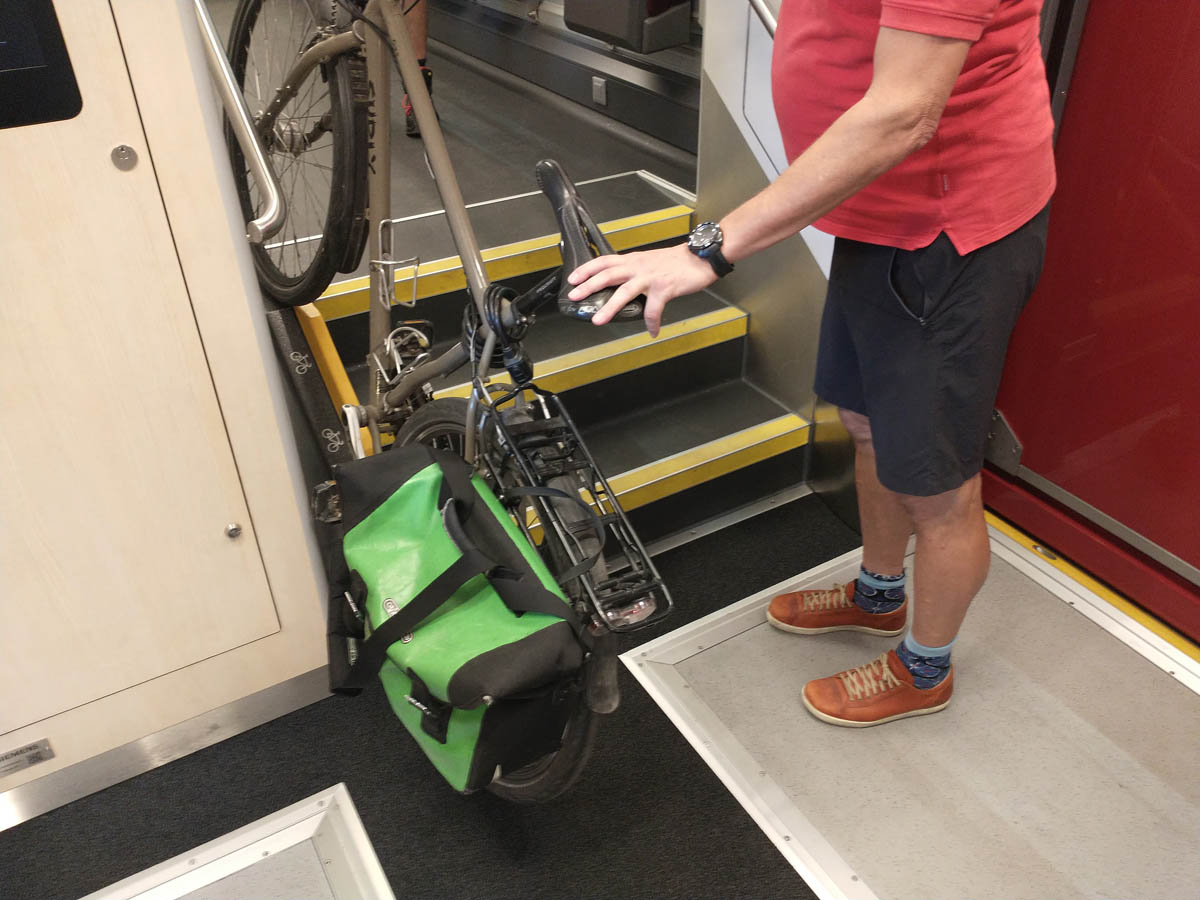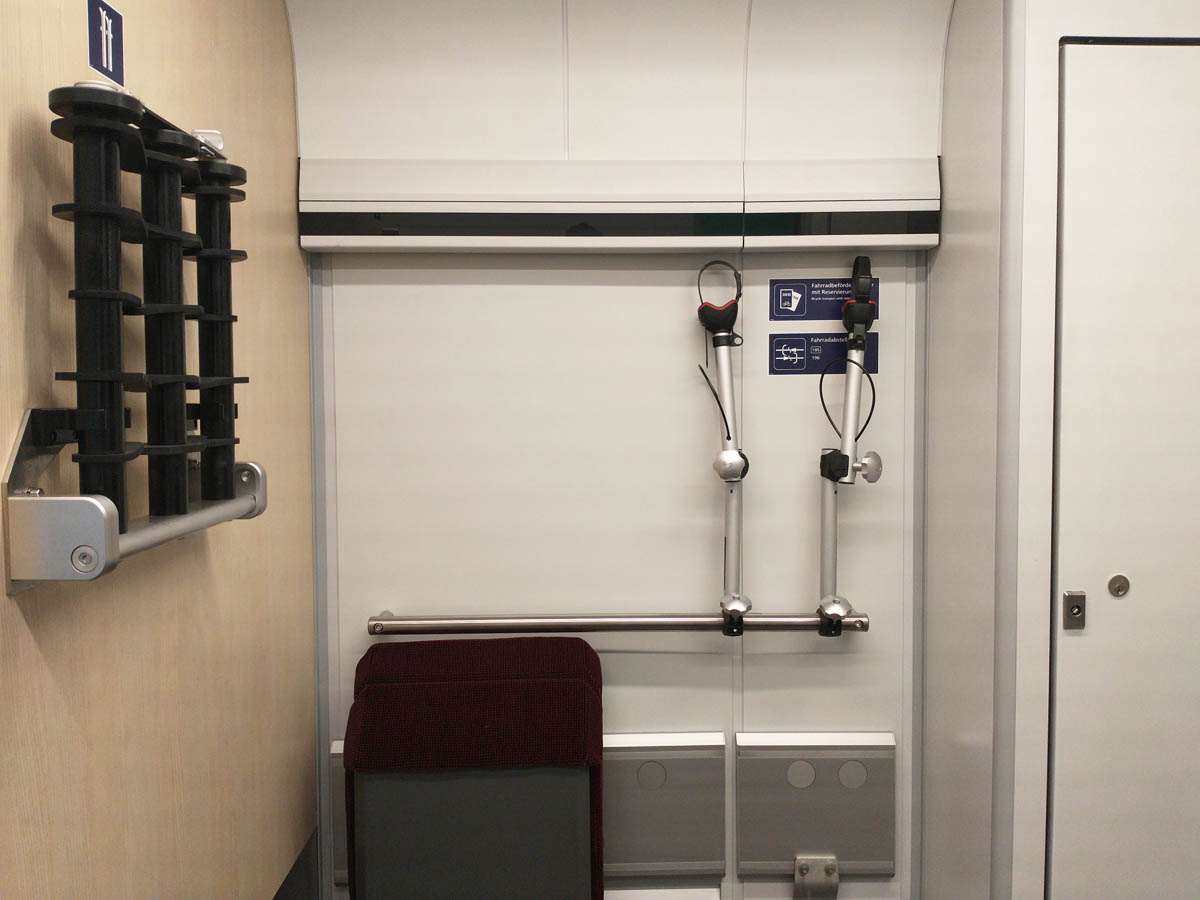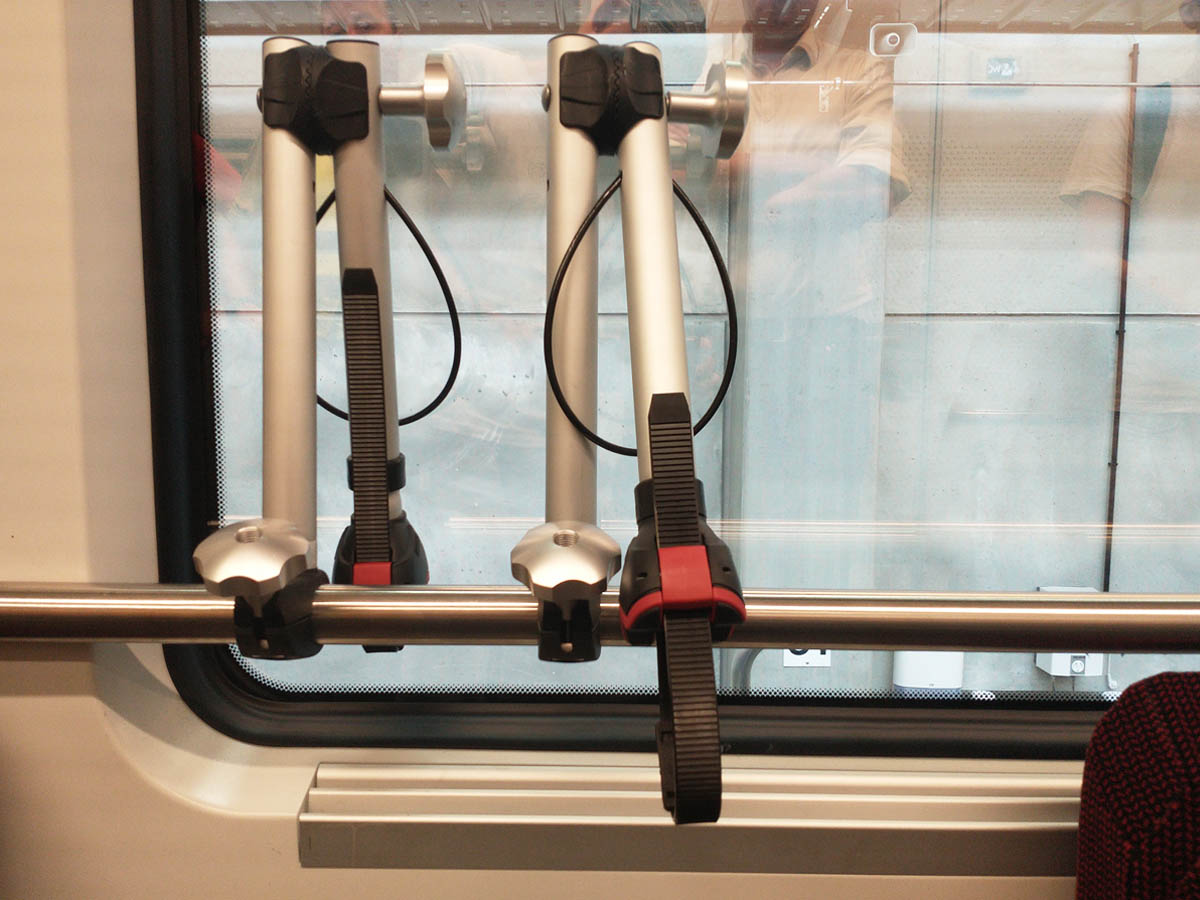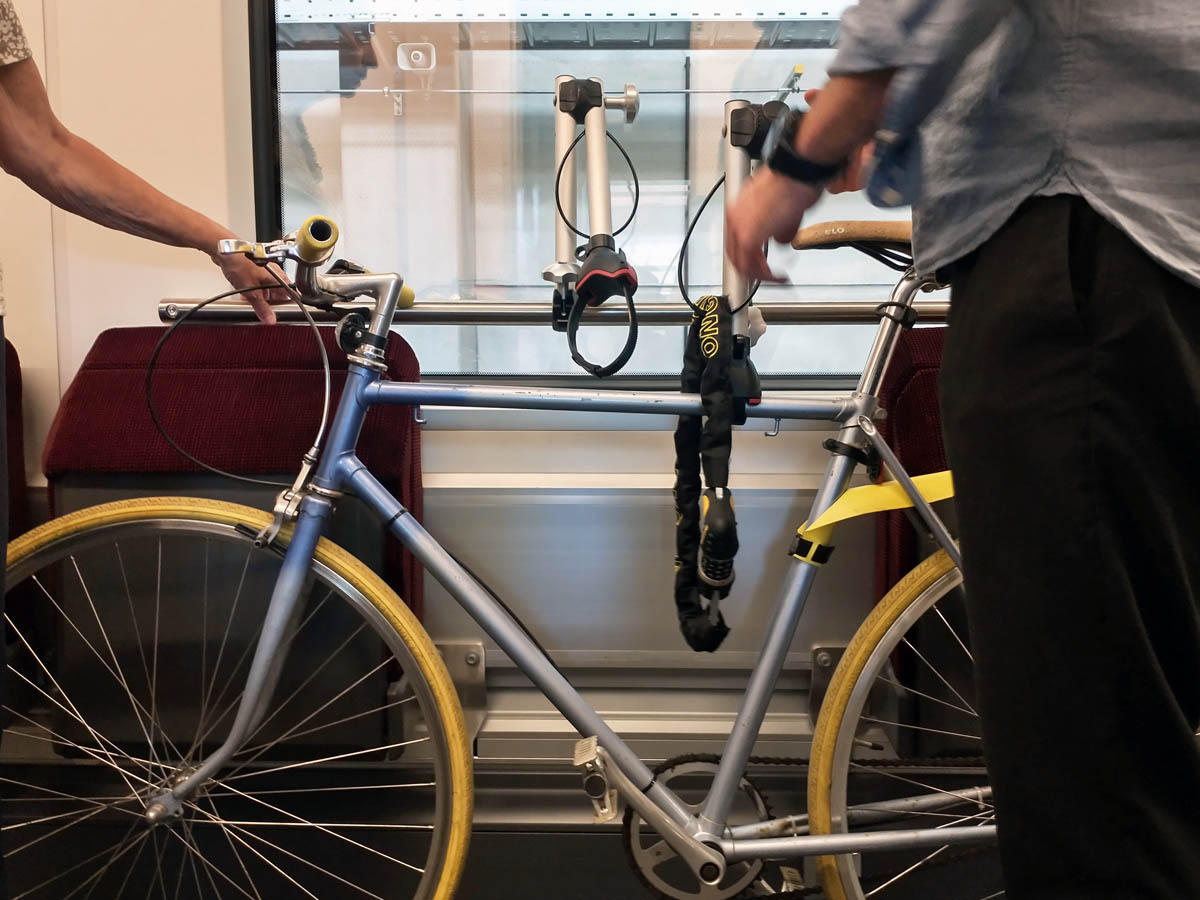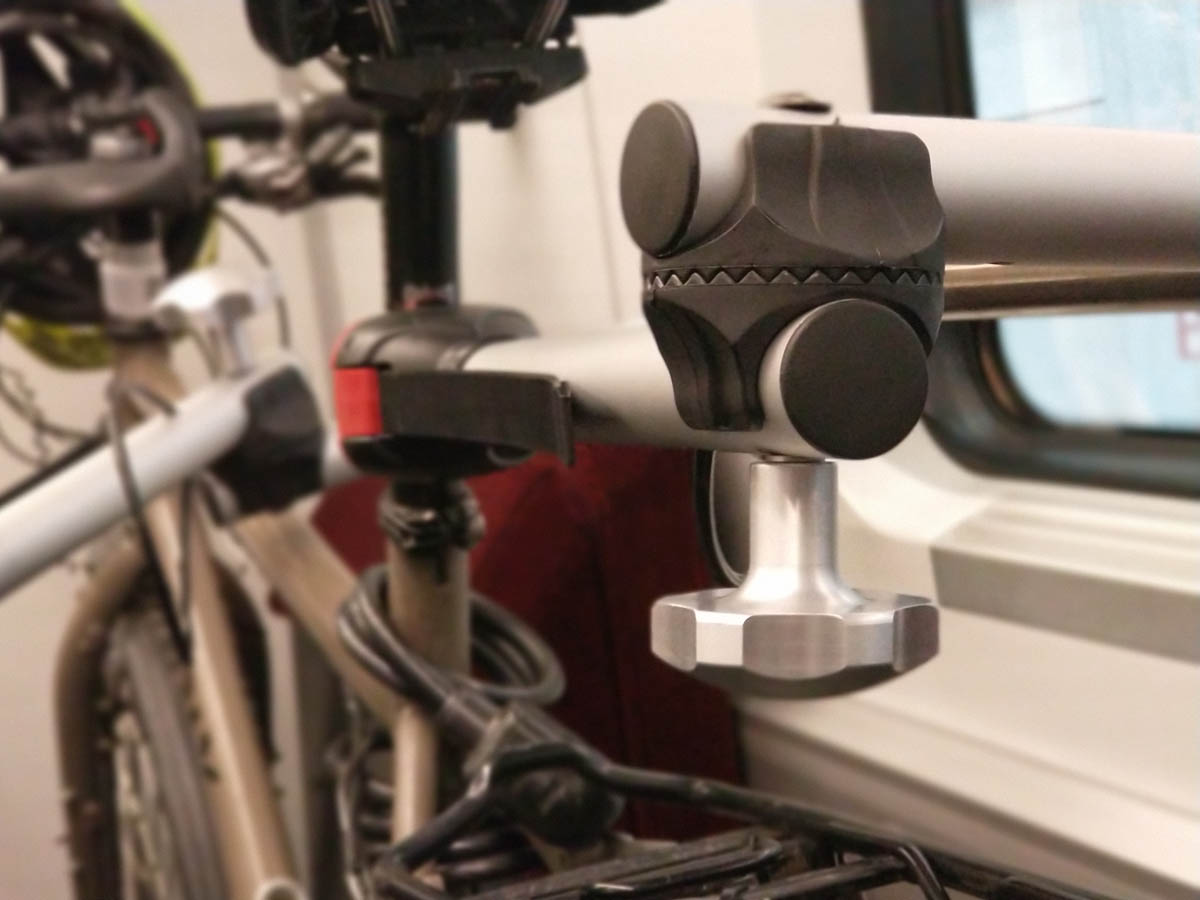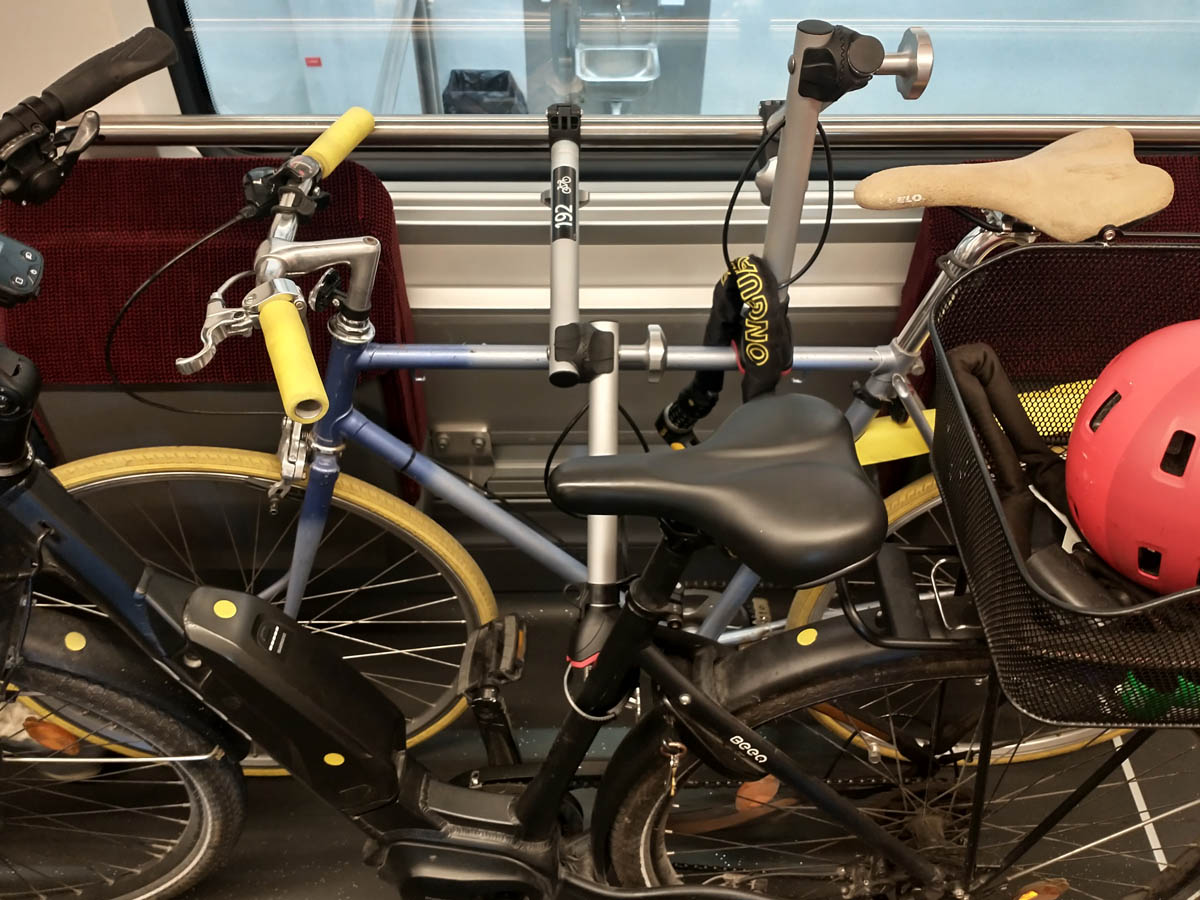Next Generation Nighttrain: Biketransport in the new ÖBB Nightjet

The Austrian Federal Railway (ÖBB) is known for its leading role in European overnight train travel. With the new Nightjet trains expected to operate from December, they aim to launch what they call a ‘flagship service’. We tested the redesigned bike transport options with Radlobby Österreich, a member of Cycle Competence Austria, in the ÖBB depot. Which improvements have been made compared to the Railjet? Our general impression is very positive.
Biketransport in the Railjet trains
Bike transport in ÖBB Railjet trains (pictured above) is dreaded by cyclists and other passengers alike. While progress has certainly been made since the trains were retrofitted to accommodate bike transport in line with EU regulations, the process of boarding with bikes presents significant challenges: steps at the entry, limited manoeuvring space, awkward storage of bikes, and a narrow passage for other passengers to pass. Even for fit bike-packers, it’s a challenge, and it’s impossible for older people with weighty e-bikes to manage alone. There was ample experiential evidence that could influence the functional design of the new Nightjets, and this has, indeed, been taken into consideration.
Low-access area with ramp
The bike area is entered through a wide door to a wheelchair-accessible area, which impresses with its low floor and ample entry space. Behind the entrance door, there are three unavoidable steps, over which one can easily lift a lightweight bike. Alternatively, for heavy e-bikes, there is a track on the left-hand side to assist. Luggage can be a hindrance here, but in most cases it will have been unloaded beforehand.
The positioning of the track is required by regulations to protect visually impaired individuals. To prevent the track from becoming a tripping hazard, it must be narrow and placed at the very edge. In order to successfully navigate the track, bikes must be held at an angle, requiring some careful pedal positioning.
Nevertheless, in the test, not only strong individuals but also those with limited physical strength could load heavy e-bikes themselves with relative ease. This would have previously been impossible in the Railjet.
Clamping instead of hanging
The bike transport area is designed as a wide multifunctional compartment alongside the toilet area. Six bicycles can be accommodated in three pairs, secured with adjustable brackets:
Joints with rotating mechanisms are used to adjust the brackets and secure them to the bicycles. The only weakness is in the theft protection of the bikes on these brackets; only a thin cable is provided through which customers can thread their own locks.
Wide aisles and luggage racks
Even when two bikes are parked side by side, it is easy for passengers to pass through or move past with additional bikes, as long as they do not have extremely wide handlebars.
The Radlobby tested the luggage compartments outside the sleeping areas, which have proven to be spacious enough to accommodate folding bikes. These can be secured using the passenger’s NFT card, regulating access.
Specifications of the new Nightjets
A total of 33 brand new seven-wagon night trains have been ordered, with the first ones set to operate on the Hamburg route from the 10th of December. The seven-wagon Nightjets consist of two seating wagons, three couchette wagons, and two sleeper wagons. The total capacity per train is 254. The ÖBB’s goal in the design was to combine modern aesthetics with even more comfort and space. This has certainly been achieved in the wheelchair-accessible couchette compartment for up to two wheelchair users and their companions, as well as in the wheelchair-accessible toilet. The sleeper wagons and the “comfort plus” sleeper wagons also impress, with the latter offering a spacious compartment for two with its own toilet and shower.
Innovative sleeping capsules replace the previous foldable berths in the couchette car. These “Mini Cabins” are designed as single sleeping spaces in the couchette car with storage space, a fold-down table for breakfast, an integrated mirror, coat hooks, reading lamps, and adjacent lockers for carry-on luggage and shoes. A nice detail can be found at the head of the cabins where there is an optionally lockable sliding window to the neighbouring berth.
We wish you a good night in the new Nightjet! Cyclists over 1.85m in height might try this solution.
Pictures: Radkompetenz/Hager | Infos ÖBB zum neuen Nightjet
Cycling Competence Members in this article:
More articles with this member:
[crp]
Share this article:
Next Generation Nighttrain: Biketransport in the new ÖBB Nightjet
Share this article:

The Austrian Federal Railway (ÖBB) is known for its leading role in European overnight train travel. With the new Nightjet trains expected to operate from December, they aim to launch what they call a ‘flagship service’. We tested the redesigned bike transport options with Radlobby Österreich, a member of Cycle Competence Austria, in the ÖBB depot. Which improvements have been made compared to the Railjet? Our general impression is very positive.
Biketransport in the Railjet trains
Bike transport in ÖBB Railjet trains (pictured above) is dreaded by cyclists and other passengers alike. While progress has certainly been made since the trains were retrofitted to accommodate bike transport in line with EU regulations, the process of boarding with bikes presents significant challenges: steps at the entry, limited manoeuvring space, awkward storage of bikes, and a narrow passage for other passengers to pass. Even for fit bike-packers, it’s a challenge, and it’s impossible for older people with weighty e-bikes to manage alone. There was ample experiential evidence that could influence the functional design of the new Nightjets, and this has, indeed, been taken into consideration.
Low-access area with ramp
The bike area is entered through a wide door to a wheelchair-accessible area, which impresses with its low floor and ample entry space. Behind the entrance door, there are three unavoidable steps, over which one can easily lift a lightweight bike. Alternatively, for heavy e-bikes, there is a track on the left-hand side to assist. Luggage can be a hindrance here, but in most cases it will have been unloaded beforehand.
The positioning of the track is required by regulations to protect visually impaired individuals. To prevent the track from becoming a tripping hazard, it must be narrow and placed at the very edge. In order to successfully navigate the track, bikes must be held at an angle, requiring some careful pedal positioning.
Nevertheless, in the test, not only strong individuals but also those with limited physical strength could load heavy e-bikes themselves with relative ease. This would have previously been impossible in the Railjet.
Clamping instead of hanging
The bike transport area is designed as a wide multifunctional compartment alongside the toilet area. Six bicycles can be accommodated in three pairs, secured with adjustable brackets:
Joints with rotating mechanisms are used to adjust the brackets and secure them to the bicycles. The only weakness is in the theft protection of the bikes on these brackets; only a thin cable is provided through which customers can thread their own locks.
Wide aisles and luggage racks
Even when two bikes are parked side by side, it is easy for passengers to pass through or move past with additional bikes, as long as they do not have extremely wide handlebars.
The Radlobby tested the luggage compartments outside the sleeping areas, which have proven to be spacious enough to accommodate folding bikes. These can be secured using the passenger’s NFT card, regulating access.
Specifications of the new Nightjets
A total of 33 brand new seven-wagon night trains have been ordered, with the first ones set to operate on the Hamburg route from the 10th of December. The seven-wagon Nightjets consist of two seating wagons, three couchette wagons, and two sleeper wagons. The total capacity per train is 254. The ÖBB’s goal in the design was to combine modern aesthetics with even more comfort and space. This has certainly been achieved in the wheelchair-accessible couchette compartment for up to two wheelchair users and their companions, as well as in the wheelchair-accessible toilet. The sleeper wagons and the “comfort plus” sleeper wagons also impress, with the latter offering a spacious compartment for two with its own toilet and shower.
Innovative sleeping capsules replace the previous foldable berths in the couchette car. These “Mini Cabins” are designed as single sleeping spaces in the couchette car with storage space, a fold-down table for breakfast, an integrated mirror, coat hooks, reading lamps, and adjacent lockers for carry-on luggage and shoes. A nice detail can be found at the head of the cabins where there is an optionally lockable sliding window to the neighbouring berth.
We wish you a good night in the new Nightjet! Cyclists over 1.85m in height might try this solution.
Pictures: Radkompetenz/Hager | Infos ÖBB zum neuen Nightjet
Cycling Competence Members in this article:
More articles with this member:
[crp]




